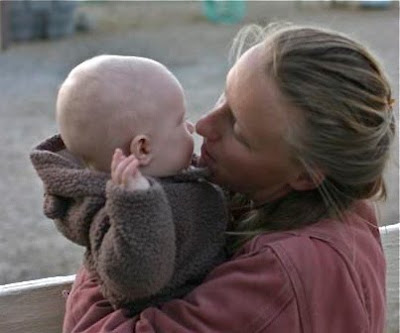
SO MUCH TO TELL YOU! HERE IS JUST A SAMPLING OF OUR EXCITING 2010!
Our Visit to Raymond!
We finally made time to really “experience” the nearby town, historic Raymond! The first destination, something we were anticipating the most, was the Frontier Inn to see if they really have the coldest beer in town. We never got to test their claim though, since the town’s only other bar was closed down by the County Health Department earlier in the week.
Our visit to the Post Office revealed that in a single year,
thousands of pieces of mail are handled, some of it First Class.
The town’s main employer, the granite quarry, was closed. We were terribly disappointed, but relieved to find out that they don’t allow visitors anyway. In the past, a few people on the tour were caught pocketing samples of crushed rock the company sells for road surfacing. The manager finally said “Enough!” and put an end to all tours. What a shame that just a few people can ruin it for everyone else!
We were so pleased to see all the school buses parked in a neat row by the elementary school. They appeared to be very clean, too, even from a distance.
Sadly our “day on the town” was cut short after only a few hours because Tom had “gone wild” and taken so many pictures he ran his camera battery completely flat just as the power had gone out all over town; there was no way to recharge it. We left reluctantly, thanking the many residents who were so kind and gracious and willing to share their little corner of the world with us, even if only for a short time.
Petting the neighbors’ horses!
Bruce and Candy, who live down the road a ways, invited us to come pet their two horses. We felt honored because as far as we know, they have never invited anyone else around here to pet them. As we were leaving, Bruce invited Karla to sit in the driver’s seat of his big yellow bulldozer!
Vista Point!
It took nearly all day to drive to and from Vista Point on State Route 168, but boy, was it worth it! There was ample parking, much to our relief, since we had heard it was such a popular spot. We were pleased to find a CalTrans receptacle for the trash we had accumulated during our trip: From Raley’s Mountain Café in Oakhurst there was Tom’s 12-ounce Peet’s coffee cup, and Karla’s tomato soup bowl and cellophane wrappers from the two complimentary packets of soda crackers that came with her soup. We also discarded the plastic spoon and a couple of paper napkins. It was gratifying to experience our tax dollars at work.
On the return trip, Karla discovered an empty potato chip bag under her seat, but we decided we were too far away to go back so we tossed it in the trash receptacle when we “topped off” at the Von’s gas station in Oakhurst.
Not getting stuck on the road!
For the twenty-ninth year in a row, we were among the very few people in our valley to not get stuck on the hairpin turn on the unpaved portion of the county road. Our Toyota Highlander has full-time four-wheel-drive, which certainly helps! Other people with front-wheel-drive, or worse, rear-wheel-drive are at the mercy of the slippery mud that happens on that part of the road after it rains.
It also probably helps that we stay at home when it rains!
Pressure washer fixed!
The pressure washer works again! After many frustrating tries to start our pressure washer, we finally took it to one of the local equipment rental shops. They repair broken things and assured us that they could get it working again. Sure enough, they fixed it, and even put in some fresh gasoline in the bargain. They told us that the gasoline in the tank was very old and had water in it. No wonder! Engines sure don’t run on water! Also, the carburetor was dirty inside and the spark plug needed cleaning. They also replaced the air filter.
Portable Generator fixed!
The portable generator works again! After many frustrating tries to start our portable generator, we finally took it to one of the local equipment rental shops. They repair broken things and assured us that they could get it working again. Sure enough, they fixed it, and even put in some fresh gasoline in the bargain. They told us that the gasoline in the tank was very old and had water in it. No wonder! Engines sure don’t run on water! Also, the carburetor was dirty inside and the spark plug needed cleaning. They also replaced the air filter.
Best wishes!
Here’s hoping your year was as fulfilling as ours. Even though there are many challenges in our way of life, we manage to make it through by turning ad
versity into ad
venture! We’re sure we will have more wild and wacky experiences to tell you about next year. HAPPY NEW YEAR!
Tom and Karla!






















































